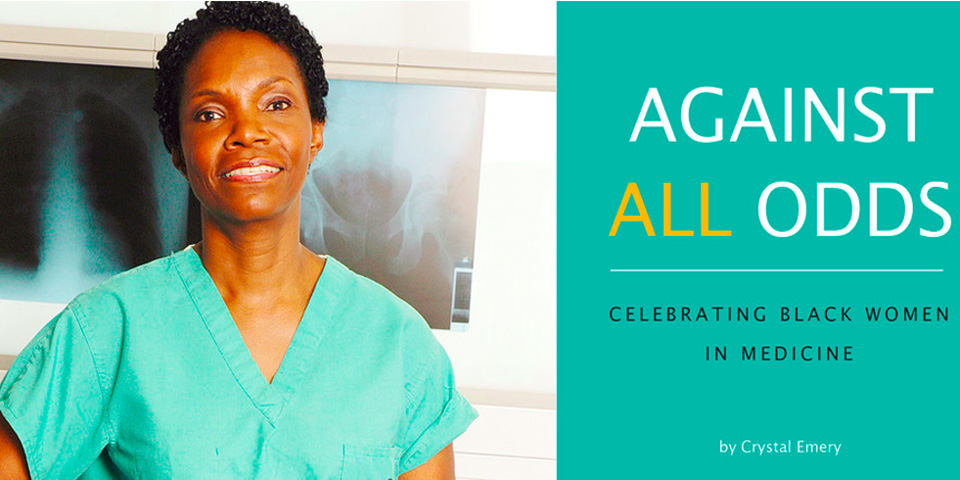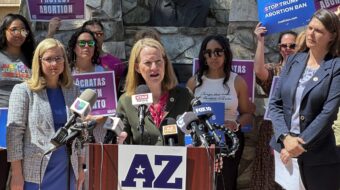
LOS ANGELES — “Representation Matters” has been a popular slogan on social media this year in reference to the need for more people of color to be shown in visible and valuable roles in society. On October 24th, to highlight this idea, The California Endowment (a philanthropic foundation that places a high premium on diversity and inclusivity) hosted a screening of the documentary “Black Women in Medicine.”
The film chronicles Black women doctors’ unsung strength and resilience as they navigate the challenges faced by women of color in the field of health care. A panel following the screening, that included actor, filmmaker, and political activist Danny Glover, along with the film’s director Crystal R. Emery, discussed the road forward in increasing African-American representation in the medical profession and the positive impact such representation could do for health care in the Black community.
According to the 2010 U.S. Census, Blacks make up 13 percent of the population at about 40 million, with more than half being women. But only 4% of U.S. physicians are African American, according to the American Medical Association’s (AMA) report, “Physician Characteristics and Distribution in the U.S., 2012 Edition“. Indeed, as of 2012 there were just 18,533 Black women physicians in the United States. This number represents less than 2 percent of a total of 985,375 U.S. doctors.
Such disparities may have far-reaching impacts on public health. According to the Center for Disease Control, death rates for Black Americans surpass those of Americans overall for heart disease, cancer, diabetes and HIV. According to a study published in Health Services Research, white males live approximately seven years longer than African American males, and white women live more than five years longer than Black women. Finally, African Americans fare far worse when it comes to infant mortality- with their rate being almost double the national average.
URU – The Right to Be, a non-profit organization that helped to produce the documentary, has a mission to challenge this disparity of people of color in the medical profession, and the poor state of health care in Black communities. The organization is mounting an educational tour that focuses on the emerging market of African American women, ages 11–20 years, alongside African American women physicians, pharmacists and allied health professionals (nurses and physician assistants). With the documentary as a main feature, the tour also includes interactive half day workshops between the physicians and students (including a question and answer forum and facilitated workshops). In addition, the campaign has produced a 264-page biographical photo-essay book entitled “Against All Odds: Celebrating Black Women in Medicine”.
As the URU website explains, By 2050, people of color will account for the majority of Americans, yet only one in ten physicians is projected to physically represent our country’s communities of color. URU’s goal is to increase the percentage of African American physicians in the United States from 4 percent in 2016 to 7 percent by 2025. The organization states that, “Changing the Face of Medicine is designed to have a substantial impact in minority communities and seeks to build a legacy for increasing access to health care in the United States. The goal represents a 63% increase of the total number of African American physicians.”
Glover introduced the film to the audience at Monday’s screening: “Here we have a chance to raise our own expectations by raising the dreams and expectations of those that dream of being doctors… This is an important film because of what it means for health care in our communities. [The movement] Black Lives Matter is connected to Black women physicians. Representation of Black women in medicine asks the question of ‘whose lives matter?’ It’s an issue of community health.”
“Black women doctors are also change agents,” said Dr. Deborah Prothrow-Stith, Dean of the College of Medicine at Charles R. Drew University. She went on to say that in order to encourage more young Black women to go into medicine there needs to be “a commitment to public schools,” because there are deficiencies when it comes to math and science in public schools. “Without the opportunities [for better education] Black children won’t pass standardized tests that help lead to careers in healthcare,” Dr. Prothrow-Stith concluded.
“You can’t be who you can’t see,” added panelist Dr. Claudia L. Thomas, the first Black woman orthopedic surgeon. “Black children need to see doctors of color in order to know they too can be doctors.”
Emery, the film’s writer-director, spoke with People’s World after the event on the mission of URU and “Black Women in Medicine.”
“The project goes beyond the role Black women play in medicine. It’s really about the images we see every day about the capableness of Black women. This film is a global experience. And the impact cannot be measured in a quantitative or qualitative way because it reaches audiences wherever they are in their thought,” Emery explained. “Whether it is a white male policy maker who has never had an inside experience into African American culture, or a little brown boy or girl who doesn’t dare to dream big because they don’t see images that say they can succeed. The impact touches each person, and it is the American Dream story,” the director said.
Emery added, “If we do not tell our own story, why would anyone else?”
The educational tour is being expanded to 20 cities in 2017 and 30 cities in 2018, and will also include an initiative to expand the project to address the lack of diversity and inclusion of Latino physicians in medicine.












Comments